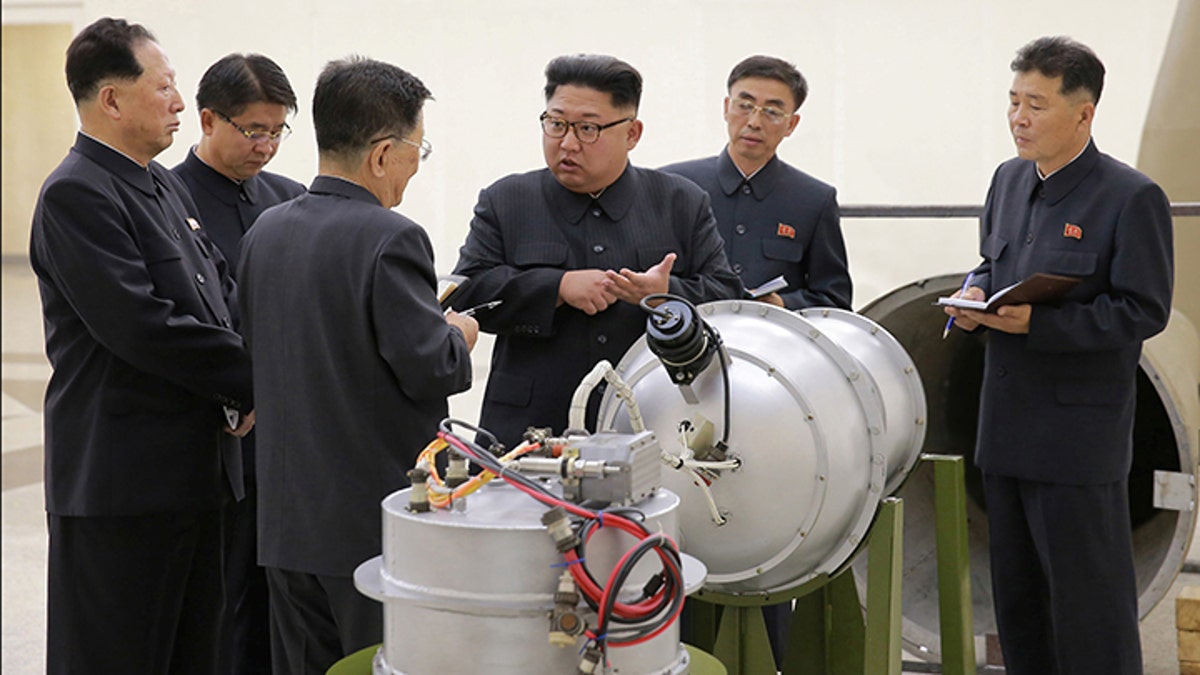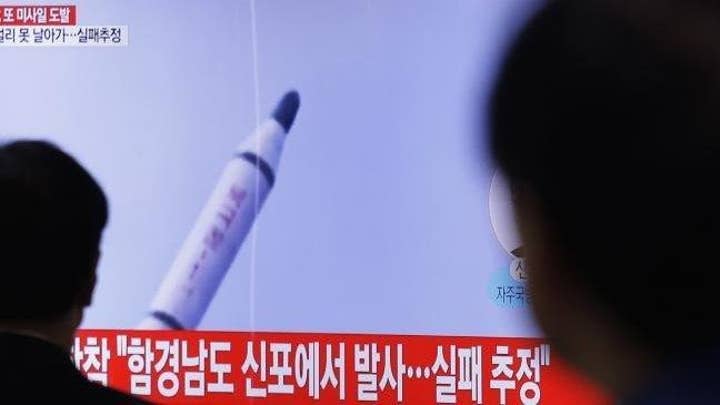
As North Korea threatens electromagnetic pulse attack, questions over lapses in US grid security rise
By , ,
Published September 28, 2017
For more than 15 years, security and intelligence officials — including former CIA Director James Woolsey — have been raising the alarm bells about the vulnerability of the U.S. power grid to an electromagnetic pulse (EMP) attack. Only now as tensions with North Korea quickly escalate — with the rogue nation refusing to back down from its nuclear testing and threats of such an onslaught — is the matter really generating attention.
But according to U.S. defense and security officials, while there are players purporting to protect the nation’s critical infrastructure given millions of American lives on the line, the reality is that no one really knows what will happen and what can be done.
“We recognize that an EMP event would have extremely dire consequences for the entire country, but where the challenge comes is in attempting to quantify those impacts,” one high-ranking Department of Homeland Security official, who requested anonymity, told Fox News. “This is not something we have had a lot of real world experience with.”

Kim Jong Un provides guidance with Ri Hong Sop (3rd L) and Hong Sung Mu (L) on a nuclear weapons program in this undated photo released by North Korea's Korean Central News Agency (KCNA) in Pyongyang, September 3, 2017. (REUTERS/KCNA)
Earlier this month, state news agencies in the Kim Jong Un-dictated country explicitly cautioned that it could hit the U.S. with an EMP offensive. A hydrogen bomb detonated at a high altitude would create an EMP that potentially could abolish prominent parts of the electrical grid. The higher the bomb’s detonation, the wider the scope of destruction. And given that high-altitude nuclear tests were prohibited as per a 1963 treaty, from the U.S. side, there is little scientific data to understand the devastation of a detonation on modern infrastructure.
But the potential fallout from such an event is monstrous. In 2001, Congress enacted the since-disbanded Commission to Assess the Threat to the U.S. with regards to an EMP event, with commissioners testifying that up to 90 percent of Americans could die within a year of such an attack. All the functions communities rely upon — hospitals, water, waste, transport, telecommunications, air control, medical care — could potentially be decimated for not days or weeks, but months or years.
“Our ability to know what would happen in the aftermath is highly uncertain. That being said, we are doing several things to deepen our understanding. There is a lot of information sharing,” noted the official. “We are looking at mitigation strategies and developing planning tools. The Federal Emergency Management Agency (FEMA) is involved too as there have been exercises and workshops related to catastrophic planning and EMP events. But DHS does not have authority to compel power operators to do anything, we do not have regulatory authority over grid operators.”
The U.S. electrical grid, which is deemed one of the most vital pieces of infrastructure in the country and serves more than 300 million, does not have one singular oversight body responsible for its safeguarding — hence authorities have cautioned that the magnitude of threat has fallen between the cracks.
“The military doesn’t think it is their job to make the grid resilient, even though 99 percent of their missions in continental United States rely on the civilian grid. The utilities don’t think it is their job because it is a national security problem. Besides, they don’t want to come up with the money, face more regulatory burdens or fool with making over parts of the grid with uncertain technical consequences,” lamented Frank Gaffney, Center for Security Policy President and Assistant Secretary of Defense for International Security Policy under President Reagan, who has long warned of EMP’s efficiency to bring down America. “And because of the sweetheart regulatory arrangement they have at the federal level, they have been able to avoid it.”
Rather, the private nonprofit North American Energy Reliability Company (NERC) makes “best practices” recommendations to the Federal Energy Regulatory Commission (FERC). NERC, as the Electric Reliability Organization, said that they do develop mandatory and enforceable standards to help protect the bulk power system, including numerous security standards and take a risk-based “defense-in-depth” approach to protecting critical grid assets from all threats.
The Department of Homeland Security (DHS) and the Department of Energy (DOE) counterpart on security and preparedness efforts.
According to the DHS, financing grid security — given that it doesn’t fall under the responsibility of one particular office — could have been done through slight rate increases, but efforts are typically bound by red tape.
“If utilities want to increase their customer rates by one cent a kilowatt hour to help invest in a new effort for counter-terrorism or EMP they have to go to a public utility commission and convince them that these rate increases are beneficial and meet certain cost/benefit conditions,” said the official. “Frankly, public utility commissions are there to protect consumers and they tend to be skeptical and tend to really push utilities to think very hard about the times they come in and push for rate increases to help support these kinds of efforts. Unlike some other industries where they can immediately pass off costs to consumers, this is not the case with power companies. They are slower to move due to the regulatory environment they have to deal with.”
MILLIONS OF AMERICAN LIVES COULD BE AT STAKE AS NORTH KOREA THREATENS TO ATTACK POWER GRID
WHY RUSSIA PROPS UP THE DANGEROUS NORTH KOREAN REGIME
Risk analyst and policy expert Dennis Santiago observed that any effort to harden the U.S. power grid — including the oldest and most interconnected portions of it in the eastern United States, which are especially exposed to disruption due to their age and design — have fallen short at the public utilities level because of “more pressing threats like physical attack security and cybersecurity.”
“In the end, this process has left the U.S. with antiquated and vulnerable infrastructure,” he said. “There is no unified or specified commander charged with specifically marshalling America’s resources from the government and private sector into an active defense of the power grid. There are civil services and regulatory bodies mostly focused on energy as utilities but nothing looks like an energy version of a military defense command.”
However, DHS authorities, in conjunction with the Department of Energy, claim that even before North Korea’s provocations they started ramping up efforts — around a year ago — to make grid vulnerability higher on the priority list. The issue was always secondary to threats considered to be more acute by the intelligence community such as counter-terrorism post 9/11 and later cybersecurity and “more destructive type natural hazards.”
“If something happens in two weeks, we wouldn’t be able to close all the gaps of vulnerability,” pointed out the official. “But having looked at this issue for a number of years, we are taking appropriate action given our set of responsibilities and authorities.”
A spokesperson for the Federal Energy Regulatory Commission (FERC) additionally told Fox News that they are “constantly working with federal partners to identify threats and vulnerabilities that could impact the power grid” and, in coordination with the federal partners, are working to “mitigate threats and where appropriate work with the private sector.”
But beyond the North Korea threat, experts also bemoan that Iran, Russia and China too have assimilated EMP attack into their military creeds, posing a significant peril to the United States.
“The very existence of the nation is at stake,” Gaffney added. “We are facing explicit threats to use EMP against us from the North Koreans — and there is a lot of capability to execute such an attack in the hands of other enemies.”
https://www.foxnews.com/world/as-north-korea-threatens-electromagnetic-pulse-attack-questions-over-lapses-in-us-grid-security-rise
